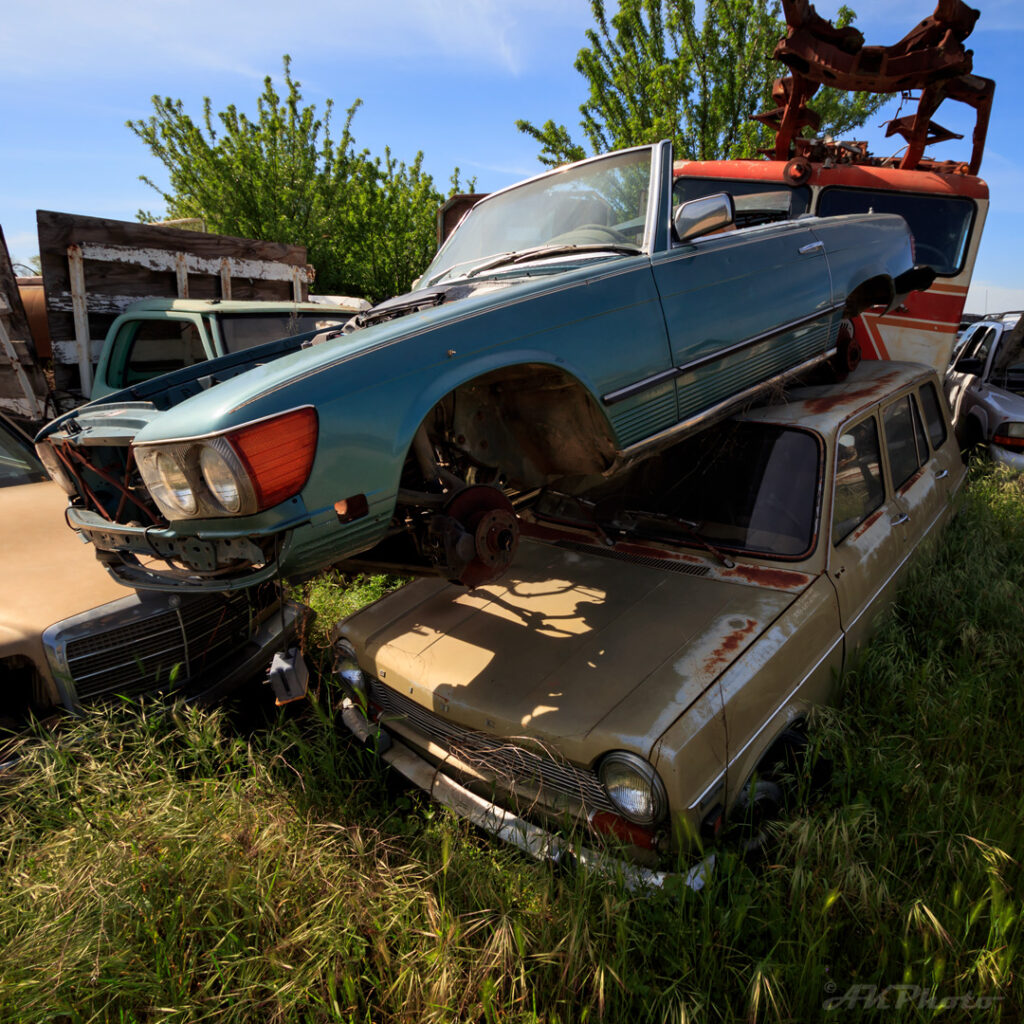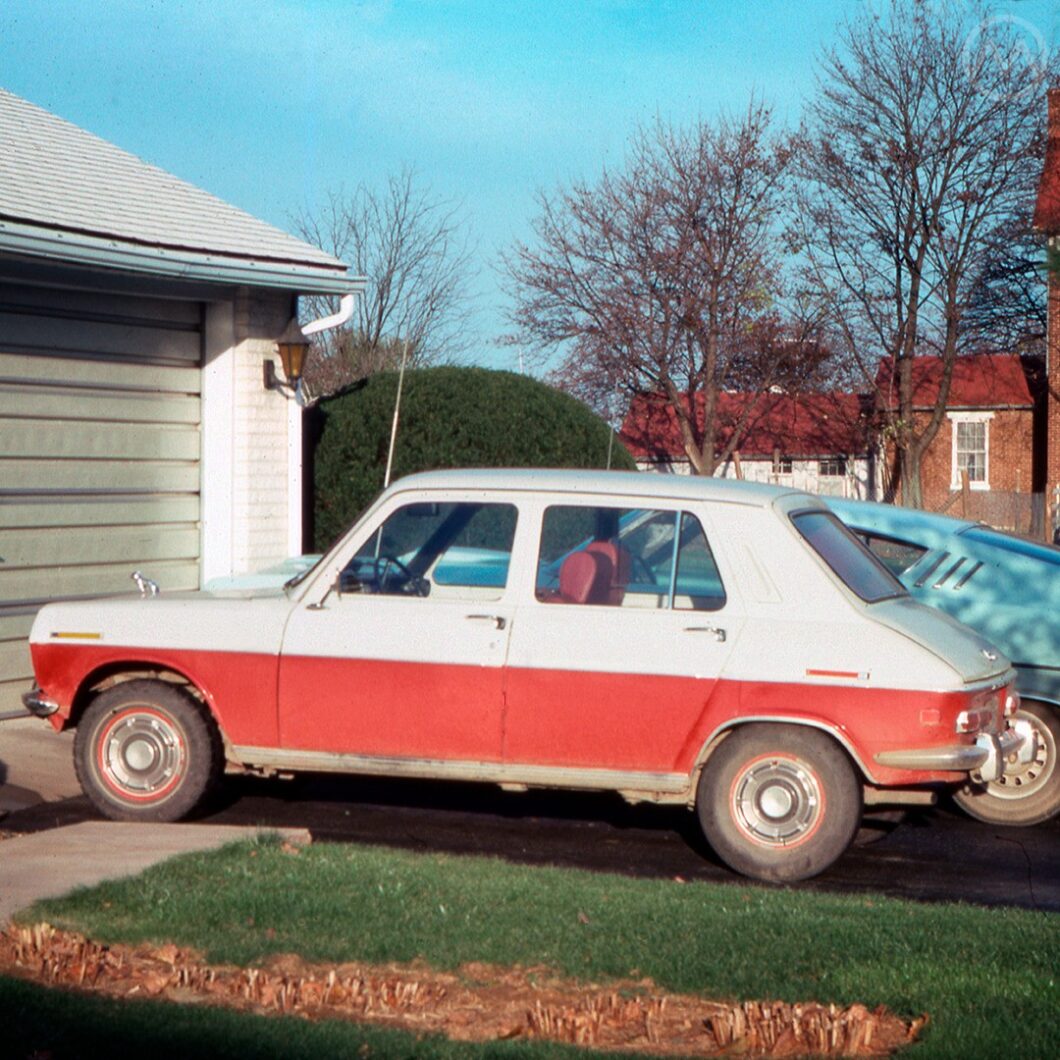Almost 2.2 million were made. It set the template for countless small cars, including legends still with us today, like the VW Golf and Honda Civic. But in the U.S., this little car is all but unknown despite actually being sold here for three years. It’s a Simca 1100, of course, but in the U.S., it was better known as the Simca 1204.
Sold (somewhat reluctantly) by Chrysler-Plymouth and Dodge dealers, this circa 1975 shot is one of those rare U.S. cars. No doubt that same year, some of those dealers were kicking themselves for having dismissed it and watching VW, Honda, and Fiat stores cash in on the Rabbit (née Golf), Civic, and 128.
Overseas, however, the car was a huge success. For several years in the early 1970s, it was France’s best-selling vehicle and one of the top sellers in all of Western Europe. And deservedly so. While Simca doesn’t have a big fanbase outside of France, and its role in PSA Peugeot-Citroën (and now Stellantis) history is largely overshadowed by other cars and brands, this car was a real pioneer.
Front-Wheel Drive Simcas
In 1961 Simca had debuted the rear-engine, Fiat-influenced 1000 and then followed it with the larger 1300/1500, meant to replace the successful but old Aronde. The bigger cars would come online in 1963, but Poissy could see a clear market gap between its new designs. Planning for a mid-range car began early that year, just as Simca was changing ownership.
The French company originally built Fiats under license, and its ties to Fiat were still very strong in the early 1960s, but Chrysler had begun taking an interest in 1958. At first buying 15% of the company from Ford, who had sold Ford of France to Simca in 1954, by 1962 Chrysler owned 25% of the company. In January of 1963, it upped its stake to 64%, becoming the de facto parent company.
Chrysler’s ambition at the time was to have an international empire just like the long-established foreign arms of GM and Ford. Simultaneous to the Simca acquisition, Highland Park was also gradually taking over the Rootes Group in the U.K., and would eventually merge these very different companies into Chrysler Europe. The 1100 would be Chrysler Europe’s first product to wear a Pentastar badge, but it was pretty much an all-Simca show.
“Projet 928” ( sometimes called VLBB or Voiture Legére Berline Break) would be unlike any previous Simca. Seeing the efficiencies and popularity of the Mini and the Renault 4, this car would be a small, light, front-wheel drive hatchback. At first though, the exact layout was open to debate. Early on, there was a prototype with a north-south engine a la Renault, but ultimately, a transverse setup (like BMC’s) was chosen for its space and power efficiencies.
Simca were not alone in wanting to make a car like this, and just as work was really beginning on the 928 Dante Giacosa’s teams were finishing up the Autobianchi Primula in Italy.
There was still cross-pollination between the two companies during the Primula’s development, and it was Fiat who developed the layout first. Both cars would use a side-on gearbox with unequal-length driveshafts and a new type of clutch that saved space and wear. How much were the Simca designers allowed to see of this? Probably not much, and the Projet 928 team wasn’t comprised of Fiat veterans as the Simca 1000’s had been. Still, they came to similar conclusions.
Engineers Charles Scales and Phillipe Grundeler, who led the project, had to get their new car approved by Chrysler’s bigwigs, all the way up to company President Lynn Townsend, but the 928 was something really unique. Not only was it unlike any other French product at the time, it was clear from BMC’s then-new ADO16 cars that there was a market for a front-drive car like this and few direct competitors.
The engineers also had the backing of the new CEO, George Héreil, who had replaced Simca’s original boss, Henri Pigozzi after the Chrysler takeover. No doubt the fact that Héreil was Chrysler’s guy helped. Detroit let them get on with it without interference and approved the car in early 1964.
The Proto-Golf
What they created was pretty much the same package that would go on to global fame as the Volkswagen Golf. In fact, VW benchmarked the 1100 and Fiat 128 to create the Golf. But it was arguably more sophisticated. The structure was a light but rigid welded unibody, but the engine, gearbox and other mechanical components were held in a front subframe, isolated to reduce noise and vibration.
The rack-and-pinion steering was precise and the torsion-bar suspension, in the mold of older cars like the Citroën Traction Avant, was both supple and capable of high limits. Plenty of French body roll, sure, but it wouldn’t let you down or scare you. The interior was huge thanks to the structure and a hatch designed in from the start. It would be available as a three or five-door, much handier than the ADO16 car’s conventional trunks, or as a wagon, either two- or four-door.
Getting the car ready for production was a huge undertaking, as Héreil and Chrysler wanted it on the market by the 1967 Paris show. When it arrived though, all the hard work (and largely abandoning niche projects like Simca’s collaboration with Abarth) paid off. The 1100 was a hit from the start, and Chrysler soon saw the value in bringing it stateside.

Simca 1204
The U.S. model arrived for 1969 with a 1204-cc version of Simca’s “Poissy” engine, designed by Georges Martin, who would later design the LeMans-winning Matra V12. The Simca 1204 made just 62 horsepower, but it weighed just under 2,000 lbs. Those were pretty average figures for a small car like this at the time, and while it wasn’t quick, it handled very well and had lots of space. Just about every journo who drove it liked it, but it came and went without much success.
Despite a fairly large ad spend in print, the 1204 just never seemed to connect with American buyers, even ones who were increasingly looking at cheap imports. Chrysler’s dealers didn’t really seem interested in trying too hard to sell or service it when they had Darts and Valiants and fuel economy didn’t really matter to anyone but real skinflints.
In 1969, more than 7,000 were sold alongside the fast-fading 1000 (briefly relabeled as 1118), but that number sank to only 6,035 U.S. Simcas in total for 1970 and just 2,600 in 1971. Chrysler pulled the plug in favor of the more conventional Plymouth Cricket (a rebadged Hillman Avenger) that same year.
In Europe, things were very different. Production gradually rose, and Simca (er, Chrysler Europe) continued to upgrade it and introduce new variations. In 1974, it debuted the 1282-cc Ti, one of the very first hot hatches (two years before the VW GTI), and French production continued into 1981, well after Peugeot had bought out Chrysler Europe. The last variations, a Pickup and a high-roof van, were introduced in 1975 and 1978, and van production continued in Spain until 1985.
We don’t know where the 1975 shot was taken, but the Simca 1204 was a very cheap used car by the late 1970s, and almost extinct a decade later thanks to minimal support from dealers and low values. Survivors are extremely rare today.

